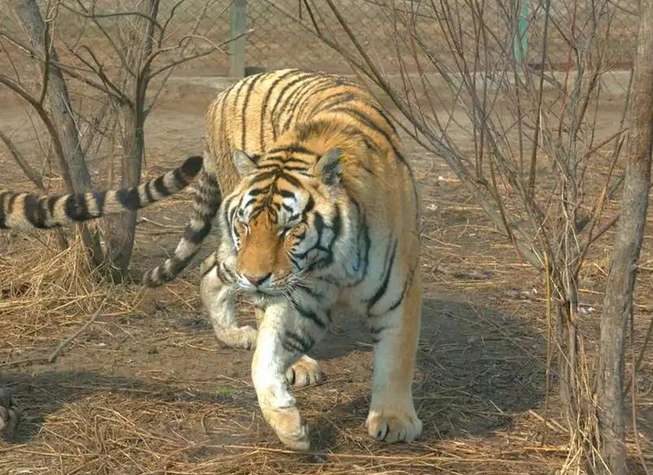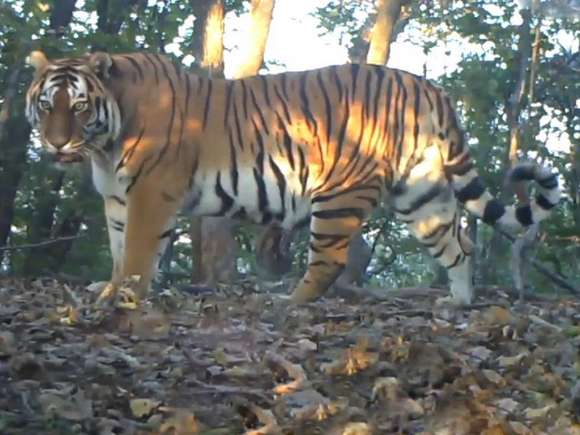There are 9 subspecies of modern tigers, namely: South China tiger, Siberian tiger, Bengal tiger, Indochinese tiger, Malayan tiger, Sumatran tiger, Caspian tiger, Bali tiger and Javan tiger, the latter three of which are extinct. .
my country is the country with the largest distribution of tiger subspecies, and the first four species all exist in the country. Historically, my country has not only the largest number of tiger subspecies, but also the largest number of individual tigers in the world.

Especially the South China tiger, which has the widest distribution and the largest number. Unfortunately, After the 1950s, their numbers plummeted and they eventually disappeared in the wild. At present, the most important wild tiger species in my country is the Siberian tiger, with a population of about 60.
According to authoritative data, in 2017, the number of wild Siberian tigers in my country was only 27. By 2023, it has reached more than 60, which is considered to be rising relatively quickly. However, due to the low base number and the low reproductive capacity of Siberian tigers, it is impossible to restore the population on a large scale in a short period of time.
In the early years, it was not easy to meet a wild Siberian tiger. However, in recent years, in some areas where Siberian tigers are distributed, the appearance of tigers has become normal. For example, in Wangqing, Raohe and other places, when people drive on mountain roads, there might be a Siberian tiger lying on the roadside.
The local appearance of Siberian tigers has become normal
The natural environment of Wulindong Town, Raohe County, Heilongjiang Province is relatively superior, with high forest coverage. It is also one of the distribution areas of Siberian tigers. one. Recently, traces of Siberian tigers were discovered on the mountains of Wulindong Town.
Local herdsmen herded their cattle into the mountains and were attacked by large beasts. A calf that was just seven or eight days old was bitten to death. There were obvious puncture wounds caused by teeth on the neck. It seemed that the calf was bitten to death.
A set of huge tiger paw prints were found at the scene, about as big as an adult's hand. Combined with the Siberian tiger's hunting method, it is not difficult to guess that it was the Siberian tiger that attacked the cattle.
From 27 to more than 60, we may not be able to intuitively feel the increase in the number of Siberian tigers from the numbers alone, but from the sightings and predation incidents of Siberian tigers that have become more and more common in recent years, we can all It shows that the number of Siberian tigers is indeed greater than before. As the number increases, the probability of related events will inevitably increase.
According to local government staff, the appearance of Siberian tigers has become normal in the local area. Most of the time, it is just seen by people.Causes damage to livestock such as cattle and sheep. But tigers are, after all, very dangerous large predators, and they need to be paid enough attention to, especially in mountain forests like this where tigers are infested, and grazing is absolutely not allowed.

The Siberian tiger's prey preferences
The Siberian tiger is The top predator in the forest ecosystem is at the top of the food chain. It feeds on various medium and large ungulates and some carnivores. It plays an important role in inhibiting the development of herbivores and maintaining the balance of the forest ecosystem. effect.
A research team composed of experts from the Wildlife Conservation Society and Durham University conducted surveys in the Sikhote Mountains and found that the main source of prey for Siberian tigers is hunting, and medium and large tigers Ungulates make up a large proportion of the diet. The top three prey species are: red deer, wild boar, and roe deer.
Grazing in forest areas where Siberian tigers are present is tantamount to putting livestock under the tiger's mouth, because based on the analysis of the Siberian tiger's feeding habits, animals the size of calves are precisely the most suitable for Siberian tigers. Favored prey resources. In addition, domestic animals that have been domesticated by humans have lost their wild nature and become easier to hunt.
Tigers are solitary cats that hunt in ambush. Because of their immense strength and sharp teeth and claws, when hunting, they usually use their forelimbs to knock down their prey, and then It bites the prey's neck with its mouth and kills it quickly. The calf killed in this attack is a typical example.

The impact of grazing on large predators
In Grazing is prohibited in forest areas where Siberian tigers roam, so the herdsmen basically have to bear the responsibility for the calves they lost in this incident. If a tiger comes down the mountain and breaks into a village and preys on livestock, you can apply for state compensation in this case.
Grazing is a very common phenomenon in rural areas, but if it is grazed in inappropriate areas, not only will the herdsmen suffer losses, but it will also have a greater impact on local wildlife. In this regard, we might as well look at ZengIn the Gir Forest National Park, grazing has had a huge impact on the eating habits of Asiatic lions.
Before 1972, Gir Forest National Park was inhabited by humans, and the indigenous Malhari people lived here as herders for generations. After 1972, India banned all human activities in the Gir Forest National Park, and the Malhari people moved to marginal areas.
It was discovered that before the Malhari people moved away, nomadic herding allowed domestic animals to directly compete with herbivores for survival resources, resulting in a low herbivore population. However, after the park banned human activities, the number of ungulates in the park increased rapidly, even reaching 600%.
In addition, livestock previously accounted for 75% of the food source of Asiatic lions, but this has since dropped to 25%. This shows that grazing still has a great impact on large predators.
In view of the emergence of Siberian tigers, another very important thing is not to disturb them excessively, especially not to make them feel familiar to humans. It is especially important to maintain a sense of strangeness.
Because international research on man-eating tigers has found that once tigers become accustomed to the presence of humans, their probability of preying on humans will be greatly increased, thus transforming into man-eating tigers. The same principle applies to livestock such as cattle and sheep. Once a Siberian tiger gets used to preying on livestock, it may take action frequently after tasting the sweetness.